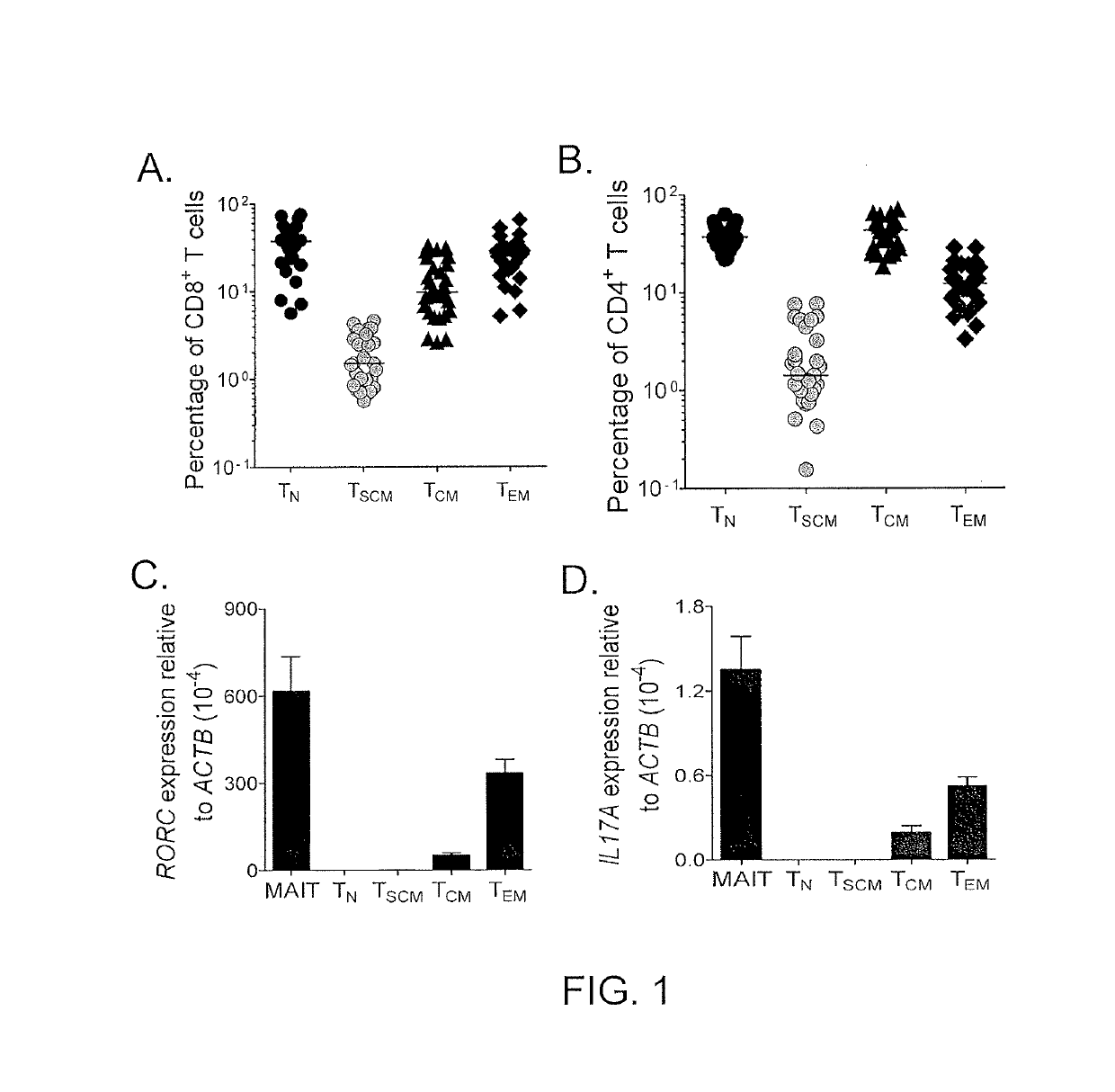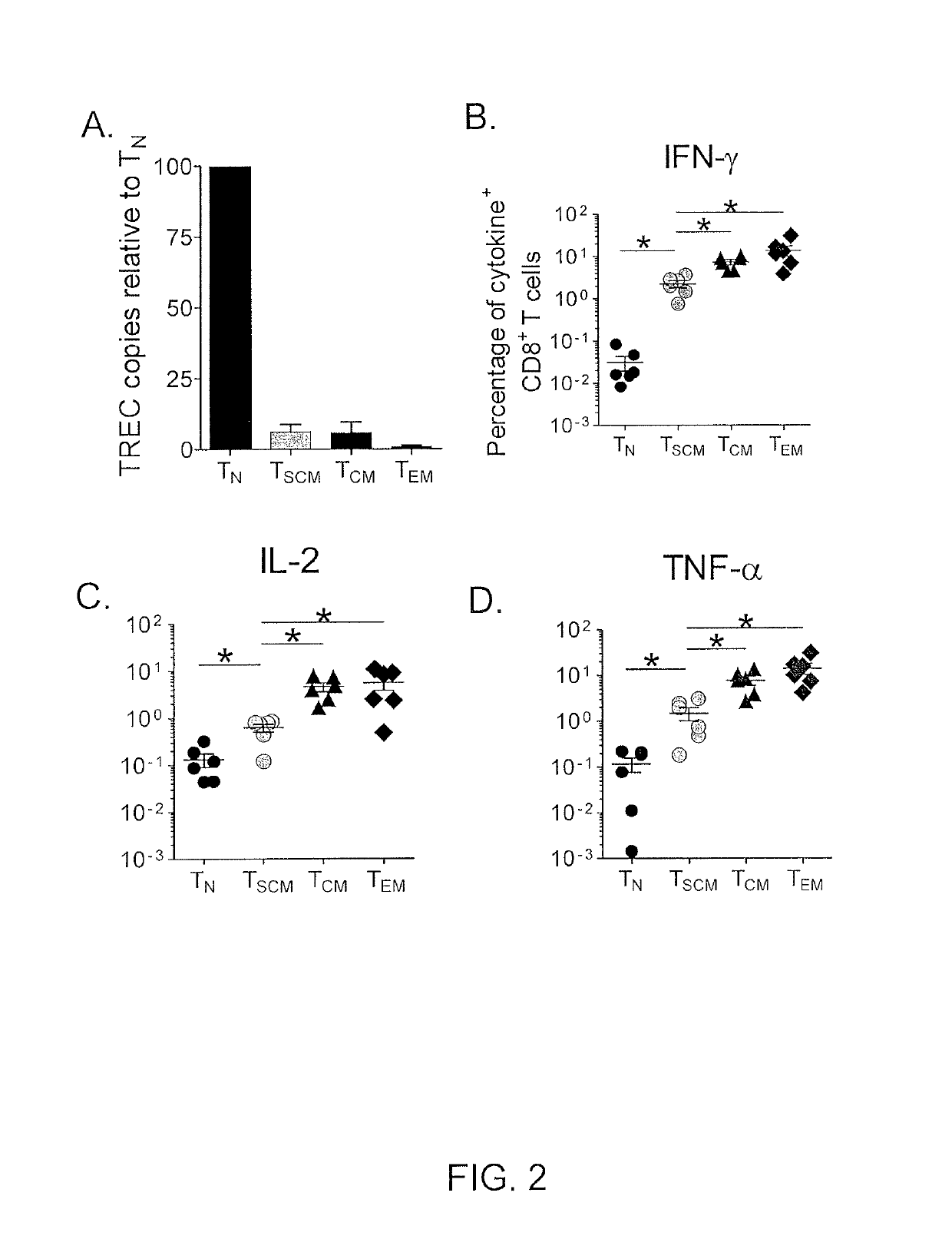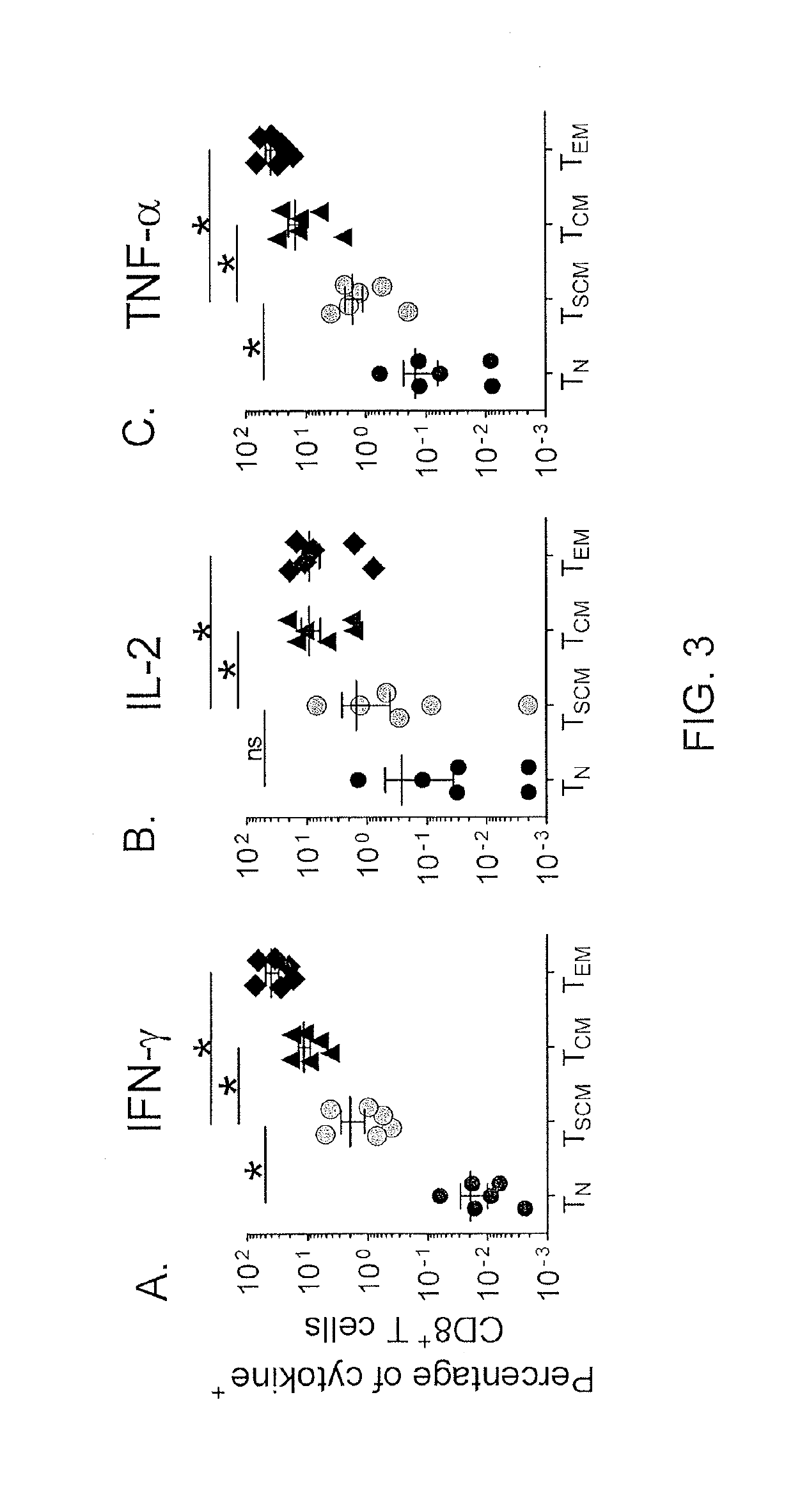Methods of producing T memory stem cell populations
a technology of stem cell populations and stem cells, which is applied in the field of methods of producing t memory stem cell populations, can solve the problems of insufficient tumor-specific reactivity of t cells isolated from the peripheral blood of a host, and the inability to successfully use act for cancer and other diseases,
- Summary
- Abstract
- Description
- Claims
- Application Information
AI Technical Summary
Benefits of technology
Problems solved by technology
Method used
Image
Examples
example 1
[0069]This example demonstrates the identification of human T memory stem cells.
[0070]Candidate human TSCM cells were generated by activating CD45RO−CD62L+ naïve CD8+ T cells in the presence of the GSK-3β inhibitor TWS119. After 2 weeks, the majority of T cells cultured with TWS119 retained a CD45RO−CD62L+ naïve -like phenotype, whereas in the absence of GSK-3β inhibition, T cells uniformly upregulated the memory marker CD45RO. To determine whether the CD45RO−CD62L+ T cells generated in the presence of TWS119 were truly naïve cells or had acquired memory traits, phenotypic analysis was performed using established markers of T cell activation and differentiation (Appay et al., Cytometry A 73: 975-983 (2008)). The vast majority of molecules (CD45RA, CCR7, CD27, IL-2Rα, IL-7Rα, CD69, 41BB, CCR5 and CD57) showed a similar expression pattern between TN cells and TWS 119-generated naïve -like T cells. However, the naïve -like T cells expressed levels of CD95 and IL-2Rβ similar to those ob...
example 2
[0072]This example demonstrates that TSCM cells possess attributes of memory T cells.
[0073]Because of the concomitant expression of numerous markers of naïve T cells as well as molecules of memory differentiation, it remained unclear whether TSCM cells were functionally naïve or memory T cells. Naïve T cells have a high content of T cell receptor (TCR) rearrangement excision circles (TRECs), which are diluted during clonal proliferation (Douek et al., Nature, 396: 690-695 (1998)). Like TCM and TEM cells, it was found that TSCM cells had low content of TRECs, indicating that they had undergone several rounds of division (FIG. 2A).
[0074]Memory T cells can also be distinguished from TN cells by their ability to rapidly acquire effector functions upon antigen rechallenge (Kambayashi et al., J. Immunol., 170: 2399-2408 (2003)). It was found that within 4 hours after exposure to Staphylococcus enterotoxin B (SEB), a significant fraction of CD95+ naïve -like CD8+ T cells produced IFN-γ, IL...
example 3
[0078]This example demonstrates that TSCM cells represent the least differentiated T cell memory subset.
[0079]The transcriptome of TSCM cells was compared with naïve and memory T cell subsets and findings were validated with PFC. 900 differentially expressed genes were found among the four CD8+ T cell subsets (PSCM cells had a distinct gene expression profile more closely related to that of memory T cells than of TN cells, further corroborating the idea that TSCM cells are a unique T cell memory subset. Consistent with previous findings (Willinger et al., J. Immunol., 175: 5895-5903 (2005)), the expression of the majority of genes (565 of 900) progressively increased (effector-associated genes) or decreased (naïve -associated genes) in the exact order: TN cells→TSCM cells→TCM cells→TEM cells. Transcripts encoding regulators of effector differentiation and senescence, such as eomesoderminutes (Pearce et al., Science, 302: 1041-1043 (2003)), T-box 21 (Joshi et al., Immunity, 27: 281-2...
PUM
| Property | Measurement | Unit |
|---|---|---|
| time | aaaaa | aaaaa |
| volume | aaaaa | aaaaa |
| concentration | aaaaa | aaaaa |
Abstract
Description
Claims
Application Information
 Login to View More
Login to View More - R&D
- Intellectual Property
- Life Sciences
- Materials
- Tech Scout
- Unparalleled Data Quality
- Higher Quality Content
- 60% Fewer Hallucinations
Browse by: Latest US Patents, China's latest patents, Technical Efficacy Thesaurus, Application Domain, Technology Topic, Popular Technical Reports.
© 2025 PatSnap. All rights reserved.Legal|Privacy policy|Modern Slavery Act Transparency Statement|Sitemap|About US| Contact US: help@patsnap.com



